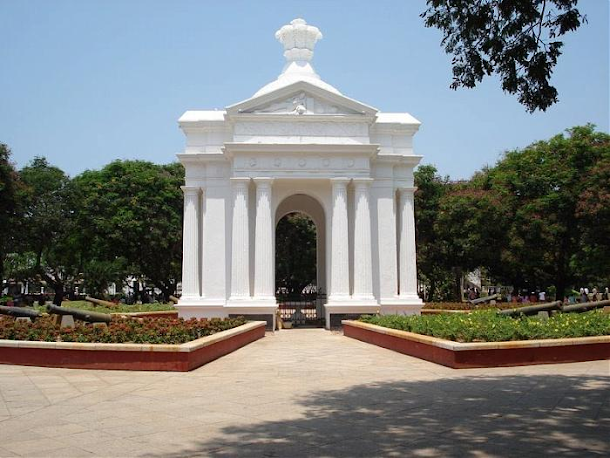Discovering Pondicherry's Historical Gems: Aayi Mandapam and Church of Our Lady of Angels
Pondicherry, a coastal town in southern India, is known for its unique blend of French and Indian cultures, colonial architecture, and rich history. Among its numerous landmarks, Aayi Mandapam and the Church of Our Lady of Angels stand out as significant monuments, each with its own fascinating story and cultural significance.
Aayi Mandapam: A Tribute to a Noble Deed
Located in the lush Bharathi Park, Aayi Mandapam is an enduring symbol of the town’s colonial past. Built in the 16th century during the Vijayanagara Empire, the monument commemorates Aayi, a courtesan known for her altruistic contribution to the town's water supply.
The Legend of Aayi
Aayi’s story is one of remarkable generosity. It is said that she demolished her house to build a reservoir after being mistaken for a palace by the visiting King Krishnadevaraya. Her act of selflessness did not go unnoticed, and the French rulers later honored her by constructing the Aayi Mandapam. The monument stands as a blend of French and Indian architectural styles, symbolizing the town’s diverse cultural heritage.
Visiting Aayi Mandapam
Today, Aayi Mandapam is a popular spot for both locals and tourists. The park surrounding the monument is perfect for leisurely strolls and offers a serene escape from the bustling town. The best time to visit is during the cooler months from November to February, when the weather is pleasant for outdoor activities.
Church of Our Lady of Angels: A French Architectural Marvel
Another significant landmark in Pondicherry is the Church of Our Lady of Angels, known for its stunning French architecture and historical importance. Located in the French Quarter, this church is a testament to the town’s colonial past and religious heritage.
Historical Significance
Built in 1855, the Church of Our Lady of Angels is one of the oldest churches in Pondicherry. It was constructed by the French missionaries and is dedicated to the Virgin Mary. The church is renowned for its beautiful white façade, intricate interiors, and a serene ambiance that attracts visitors from all over the world.
Architectural Splendor
The church’s architecture is a classic example of French design, featuring a mix of Romanesque and Gothic styles. Its vaulted ceilings, elegant arches, and stained glass windows create a breathtaking visual experience. The marble altar, imported from France, adds to the church’s grandeur, making it a must-visit for architecture enthusiasts.
Community and Culture
The Church of Our Lady of Angels is not just a place of worship but also a center for community gatherings and cultural events. It plays a vital role in the local community, hosting various religious ceremonies and celebrations throughout the year. The Sunday Mass, conducted in both Tamil and French, is particularly popular among locals and tourists alike.
Exploring Pondicherry’s Heritage
Visiting Aayi Mandapam and the Church of Our Lady of Angels provides a deeper understanding of Pondicherry’s rich history and cultural diversity. These monuments are not just architectural marvels but also tell stories of the town’s past, its people, and their contributions to its heritage.
A Cultural Journey
A trip to Pondicherry is incomplete without exploring these historical gems. Start your journey at Bharathi Park, where Aayi Mandapam stands as a tribute to a noble deed. Take a moment to appreciate the monument’s architectural beauty and reflect on the story of Aayi. From there, head to the French Quarter and visit the Church of Our Lady of Angels. Marvel at its stunning architecture, participate in a Mass, and experience the serene ambiance.
Conclusion
Pondicherry’s Aayi Mandapam and Church of Our Lady of Angels offer a unique glimpse into the town’s rich heritage. These landmarks, with their captivating stories and architectural splendor, are essential stops on any cultural exploration of Pondicherry. By visiting these sites, travelers can gain a deeper appreciation of the town’s history and the enduring legacy of its people.












Comments
Post a Comment